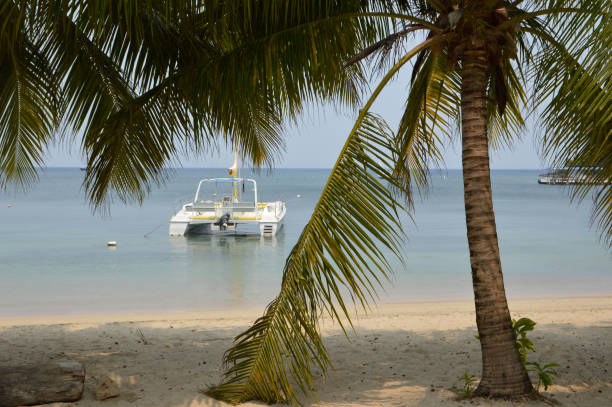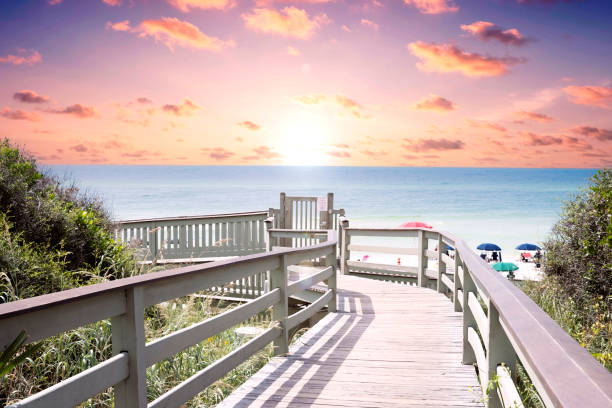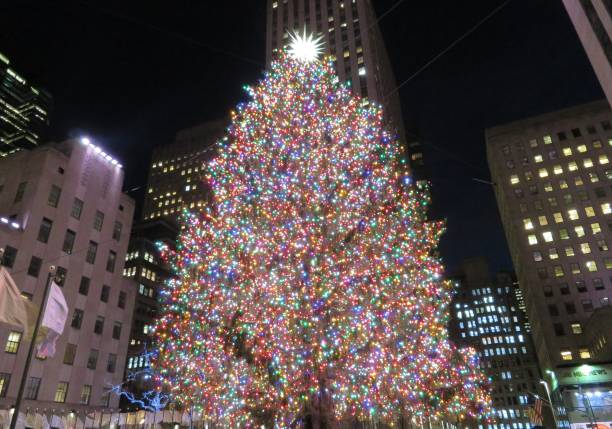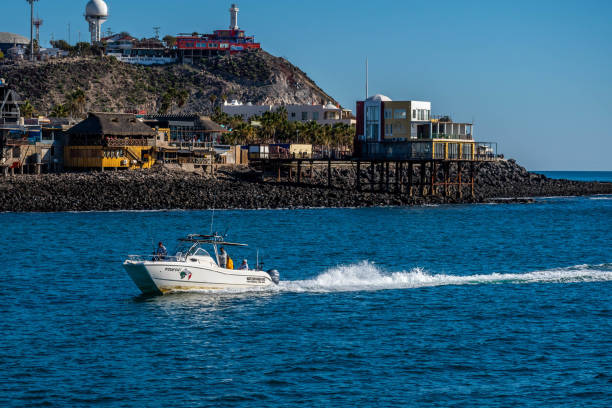Exploring Roatan: A Tropical Paradise with Stunning Beaches, Rich Culture, and Diverse Communities
Roatan, an island located off the northern coast of Honduras, is a tropical paradise in the Caribbean that attracts tourists from around the world [1].With its stunning beaches, diverse attractions, and exciting activities, Roatan offers a memorable vacation experience. Whether you’re seeking relaxation on pristine white sand beaches, exploring vibrant coral reefs, or immersing yourself in the rich cultural heritage of the island, Roatan has something for everyone.
Roatan is situated between the islands of Utila and Guanaja and is the largest of the Bay Islands of Honduras. The island spans approximately 77 kilometers in length and is less than 8 kilometers wide at its widest point. Roatan consists of two municipalities: José Santos Guardiola in the east and Roatan, including the Cayos Cochinos, in the west. The island’s exposed ancient coral reef is a testament to its natural beauty, making it a popular destination for scuba diving enthusiasts. Coxen Hole, located in the southwest, is the most populous town on the island, while other settlements such as Gravel Bay, Flowers Bay, West End, West Bay, and Punta Gorda offer unique experiences to visitors.

Beautiful Beaches in Roatan
Roatan boasts a variety of beautiful beaches, each with its own unique charm and appeal. One such beach is West Bay Beach, known for its pristine white sand and crystal-clear turquoise waters. It stretches for two miles, offering ample space for sunbathing and relaxation. The beach is also a popular spot for swimming and snorkeling, with its coral reefs teeming with colorful marine life just a short swim from the shore. Sandy Bay, on the other hand, is a serene and secluded beach perfect for those seeking tranquility and privacy. Its peaceful atmosphere and natural beauty make it an ideal spot for relaxation. Half Moon Bay is another beautiful beach in Roatan, less crowded than some of the other popular beaches, and features calm waters, making it ideal for snorkeling. Tabyana Beach, with its vibrant coral reefs, is a haven for divers, offering a unique opportunity to explore the underwater world. Parrot Tree Beach, surrounded by lush greenery, provides a tranquil escape for those looking to unwind and enjoy nature.
For example, West Bay Beach is often ranked as one of the best beaches in the Caribbean. With its powdery white sand and clear turquoise waters, it offers a picturesque setting for beachgoers. The beach is lined with all-inclusive resorts, restaurants, and bars, providing everything visitors need for a day of relaxation and fun in the sun. Snorkeling in the coral reefs just off the shore is a must-do activity, as it offers a chance to see colorful fish and other marine creatures up close. Whether you’re lounging on the beach, snorkeling, or enjoying a refreshing drink at a beachfront bar, West Bay Beach is a true tropical paradise.

Must-Visit Places in Roatan
Roatan is not only known for its beautiful beaches but also for its vibrant towns and cultural attractions [2].Coxen Hole, the largest town on the island, serves as the center for politics and commerce. Visitors can explore local markets, shops, and restaurants, immersing themselves in the daily life of the island. French Harbour, another must-visit place, is the core of Roatan’s fishing trade and features exclusive hotels, as well as an iguana conservatory. Punta Gorda, the only Garifuna settlement on the island, offers a unique cultural experience, showcasing the traditions and rich heritage of the Garifuna people. West End, a popular tourist area, is known for its vibrant nightlife, with bars, clubs, and live music venues lining the streets. The Roatan Institute of Marine Sciences, located in Anthony’s Key Resort, is a renowned research and education center that offers interactive experiences, such as dolphin encounters and educational programs, providing visitors with a deeper understanding of the marine world.
One must-visit place in Roatan is French Harbour. As the core of Roatan’s fishing trade, it offers a glimpse into the island’s maritime heritage. Visitors can witness the bustling activity of fishermen bringing in their catches and explore the local fish market, where various types of seafood are displayed. French Harbour is also known for its exclusive hotels, providing a luxurious experience for those seeking a tranquil retreat. At the iguana conservatory, visitors can observe and learn about these fascinating reptiles, which are native to the island. By visiting French Harbour, visitors can immerse themselves in the local culture and get a taste of the island’s vibrant atmosphere.

Top Attractions in Roatan
Roatan offers a range of top attractions that showcase its natural beauty and provide unique experiences for visitors. One of the most prominent attractions is the Mesoamerican Barrier Reef System, the second-largest barrier reef in the world. This underwater wonderland is a paradise for snorkelers and divers, with its vibrant coral reefs and diverse marine life. The Carambola Botanical Gardens, another popular attraction, is home to a wide variety of plant species, including exotic flowers and tropical fruits. Gumbalimba Park is a nature park that offers thrilling activities such as zip-lining, animal encounters, and strolling through beautiful botanical gardens. Roatan Butterfly Garden, with its colorful array of butterfly species, provides a unique opportunity to observe these delicate creatures up close. For those seeking an adrenaline rush, the Pirates of the Caribbean Zipline offers a thrilling adventure through the jungle canopy.
One of the top attractions in Roatan is the Carambola Botanical Gardens. This beautiful garden is a haven for nature lovers and plant enthusiasts. Visitors can stroll along winding paths surrounded by lush vegetation, discovering a wide variety of plant species, including tropical flowers, fruit trees, and medicinal plants. The garden is not only a feast for the eyes but also offers educational opportunities, with informative signs providing insights into the different plants and their uses. Exploring the Carambola Botanical Gardens allows visitors to connect with nature and gain a deeper appreciation for the island’s rich biodiversity.
Activities to Do in Roatan
Roatan offers a plethora of activities for outdoor enthusiasts and adventure seekers. Snorkeling is a popular activity, allowing visitors to explore vibrant coral reefs and encounter an array of marine life. Diving is a must-do, as Roatan is renowned for its world-class dive sites catering to all levels of experience. Kayaking is another popular water activity, providing an opportunity to paddle through calm waters and discover hidden coves. For those seeking an adrenaline rush, zip-lining offers a thrilling experience as visitors soar through the treetops, enjoying panoramic views. Sailing is a relaxing and scenic activity, allowing visitors to appreciate the coastal beauty of the island. Whether you’re an avid adventurer or prefer a more leisurely pace, Roatan offers activities to suit every taste.
One popular activity in Roatan is kayaking. With its calm waters and picturesque coastline, the island is the perfect place to explore by kayak. Visitors can rent kayaks and paddle along the coast, discovering hidden coves, mangrove forests, and secluded beaches. It’s a great way to get closer to nature and enjoy the tranquility of the ocean. Whether you’re a beginner or an experienced kayaker, Roatan offers a range of kayaking experiences suitable for all skill levels.
Best Time to Visit Roatan
The best time to visit Roatan is during the dry season, which typically runs from February to June. This period offers ideal weather conditions for outdoor activities and beach relaxation, with plenty of sunshine and warm temperatures. The average year-round temperature in Roatan is around 80°F (27°C), providing a pleasant climate for visitors. However, it’s important to note that the hurricane season occurs from September to November, so it’s advisable to plan your trip accordingly and monitor weather forecasts for the most up-to-date information. By visiting during the dry season, you can make the most of your time in Roatan and enjoy the island’s natural beauty to the fullest.
Roatan enjoys a tropical climate throughout the year, making it a popular destination for sun-seekers and beach lovers. The dry season, from February to June, is considered the best time to visit, as it offers the most favorable weather conditions for outdoor activities. During this time, you can expect plenty of sunshine, warm temperatures, and calm seas, perfect for swimming, snorkeling, and sunbathing. The shoulder seasons of December to January and July to August also offer good weather, although there may be occasional showers. It’s worth noting that Roatan can get quite busy during the peak tourist season, so if you prefer a quieter experience, consider visiting during the shoulder seasons.
Roatan’s Rich History
Roatan’s history is a tapestry woven from various cultural influences and colonization. The island was initially colonized by the British, who left their mark on Roatan in terms of culture and architecture. The deportation of the Garifuna people to Roatan in the late 18th century holds significant historical and cultural significance. The island is home to diverse communities, including Mestizo, Black or Afro-Honduran, White, and Indigenous groups, each with their own unique traditions and contributions to the island’s cultural heritage. Despite modern developments, Roatan has managed to retain its Caribbean charm, creating a harmonious blend of old and new.
Roatan’s history is deeply intertwined with colonization and the migration of different communities. The island was initially colonized by the British, who established settlements and influenced the local culture and architecture. This British influence can still be seen today in the island’s English-speaking population and colonial-style buildings. The deportation of the Garifuna people to Roatan in the late 18th century is a significant event that shaped the island’s cultural landscape. The Garifuna people, descendants of African slaves and Indigenous Caribs, brought with them their rich traditions, music, and cuisine, which continue to thrive in Roatan’s vibrant Garifuna community. The island’s diverse communities, including the Mestizo, Black or Afro-Honduran, White, and Indigenous groups, contribute to its multicultural identity, creating a unique blend of traditions, festivals, and customs that are celebrated throughout the year.
Diverse Communities in Roatan
Roatan is home to diverse communities that contribute to the island’s multicultural identity. The Mestizo community represents a mix of Indigenous and European ancestry, adding to the island’s cultural tapestry. The Black or Afro-Honduran community consists of descendants of African slaves, bringing their own rich traditions and heritage. The White community comprises European settlers and expatriates who have made Roatan their home. Indigenous communities, with their distinct cultures and traditions, also have a presence on the island. This cultural diversity is reflected in the island’s cuisine, festivals, and customs, creating a vibrant and welcoming atmosphere for visitors.
Roatan’s diverse communities offer visitors a chance to immerse themselves in different cultures and gain a deeper understanding of the island’s multicultural identity. The Mestizo community, with its mix of Indigenous and European ancestry, contributes to the island’s cultural tapestry, enriching Roatan’s traditions and customs. The Black or Afro-Honduran community, descendants of African slaves, brings their own unique traditions, music, and cuisine, creating a vibrant cultural scene on the island. The White community, comprised of European settlers and expatriates, adds to the island’s diversity and contributes to its multicultural atmosphere. Indigenous communities, with their distinct cultures and traditions, also play a significant role in Roatan’s cultural heritage. The island’s cultural diversity is evident in its cuisine, which blends flavors and influences from various communities, as well as in its festivals and customs, which celebrate the island’s multicultural identity.
Environmental Challenges in Roatan
Like many coastal destinations, Roatan faces environmental challenges that threaten its natural beauty and ecosystems. Deforestation is a significant issue, as it impacts the island’s lush vegetation and wildlife habitats. Pollution, particularly in terms of waste management and water pollution, requires ongoing efforts to mitigate its effects and preserve the island’s pristine waters. The degradation of coral reefs, which are vital for the health of marine life, highlights the importance of conservation and sustainable practices. Roatan recognizes these challenges and is actively working towards promoting responsible tourism and preserving its natural resources for future generations.
One of the environmental challenges facing Roatan is deforestation. The clearing of land for development and agriculture has resulted in the loss of natural habitats and threatens the island’s biodiversity. Efforts are being made to address this issue through reforestation projects and the establishment of protected areas. Additionally, pollution, particularly in terms of waste management and water pollution, poses a threat to Roatan’s ecosystems. The island is taking steps to improve waste management systems and promote sustainable practices to minimize the impact of pollution on the environment. The degradation of coral reefs, caused by factors such as climate change and overfishing, is also a concern. Conservation efforts, including the establishment of marine protected areas and the promotion of sustainable fishing practices, aim to protect and restore the health of Roatan’s coral reefs. By addressing these environmental challenges, Roatan is working towards preserving its natural beauty and ensuring a sustainable future for the island.
Protecting Roatan’s Natural Resources
Various initiatives and organizations are working towards the protection of Roatan’s natural resources. The Roatan Marine Park plays a crucial role in safeguarding the island’s coral reefs and marine biodiversity through research, education, and conservation efforts. The park collaborates with local communities to raise awareness about the importance of marine conservation and promote sustainable fishing practices. The Roatan Institute for Marine Sciences conducts research and education programs focused on preserving the island’s marine ecosystems and actively participates in conservation initiatives. These collective efforts aim to protect Roatan’s natural resources and ensure their sustainability for future generations.
The Roatan Marine Park is a key organization dedicated to the protection of Roatan’s natural resources. Established in 2005, the park plays a vital role in preserving the island’s coral reefs and marine biodiversity. Through research and monitoring programs, the park gathers valuable data on the health of the reefs and identifies areas that require conservation efforts. Education programs are also offered to locals and visitors, raising awareness about the importance of marine conservation and promoting responsible tourism practices. The park collaborates with local communities, involving them in conservation initiatives and encouraging their active participation in protecting the island’s natural resources. The Roatan Institute for Marine Sciences also contributes to the preservation of Roatan’s marine ecosystems through research, education, and community engagement. By working together, these organizations and initiatives are making a significant impact in safeguarding Roatan’s natural beauty and ensuring a sustainable future for the island.
Conclusion
Roatan, with its stunning beaches, vibrant culture, and diverse attractions, is a tropical paradise that offers a wealth of experiences for visitors. Whether you’re lounging on the pristine white sand beaches, exploring the vibrant coral reefs, or immersing yourself in the rich history and cultural heritage of the island, Roatan has something to offer everyone. It is important to recognize and support the efforts being made to protect Roatan’s natural resources and promote responsible tourism. By preserving the island’s unique biodiversity and cultural heritage, we can ensure that future generations can continue to enjoy the beauty of Roatan. So, pack your bags and prepare to embark on a journey of exploration, relaxation, and adventure in this Caribbean gem known as Roatan.






